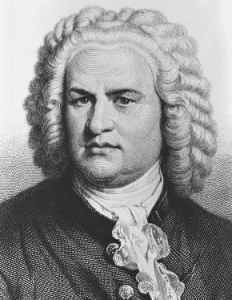Here is a review of a concert of student compositions, held at the then Canberra School of Music, on 31 October 1978, which I wrote at the time.
It is interesting that the student composer of one of the least impressive works played at that concert should end up as a professional composer (Knehans), while that of the most impressive, it seems, did not (McGuiness). But the style of McGuiness’ piece was closer to what we now call downtown, and I have never been much impressed with uptown contemporary music, despite its hold on the academy and the new music establishment. My sympathies for downtown and antipathy to uptown music has as much to do with the various aspirations of these styles as with how the resulting music sounds.
Ian Davies: Last Tango in Braidwood or I Might be Wrong. Very good – at times impressionistic, at other times expressionistic. Owes a lot to Sculthorpe (before his turn to late romanticism). Good stereo effects. Held together well, except for the ending. The last 15% of the piece would be better deleted and replaced by something much shorter, and more unified with the first 85%.
Alexandra Campbell: Harmonic Music. More harmonic than Davies’ piece, but not at all traditional. The piece seemed to lack any unifying idea, and just seemed a series of random statements, the phrases disconnected and unrelated. A pity, because some of the individual phrases were nice-sounding. Showed clear understanding of instrumental possibilities, especially the winds – perhaps fittingly for a composer who plays the oboe.
Richard Webb: Cube. If the previous piece was incoherent, this was completely incomprehensible. Like listening to someone speaking in an unknown foreign language, not even the individual phrases made sense. The piece was just a cacophony of effects, overloud and overlong.
Richard Webb: Maya. A tape realization, this was also overloud and overlong. Not gebrauchsmusik, but boretheaudiencemusik. Listening to electronic special effects in 1978 brings to mind only Star Wars and science fiction novels, so perhaps these effects can’t be used any longer. The audience began to talk about 3/4 of the way through, so my boredom was not unique.
Andrew McGuiness: Simple Music (for Simple People). This was superb! Fantastic! The ensemble stood in darkness and played according to graphic instructions written on paper affixed to the wall, each page of instructions illuminated by a lady (Alex Campbell) holding a torch, as it was being played. Sitting in the dark with just the torch light, it felt like we were watching a sunrise. And the music mirrored this feeling perfectly, though it was not programmatic or symbolic at all. The music was impressionistic and at times pseudo-Balinese (again, a la Sculthorpe). One discord was sustained throughout, I think on an electric piano or on a synth set to “harpsichord”, perhaps. Simply marvellous.
Peter Butler: Champagne will be Served at Interval. Butler played chimes and electronic piano at front. The e-piano was too loud, especially in comparison with the acoustic piano at rear. Apart from this the piece was very good. The “form” was a call-and-response structure, with the call issued by one of the five sections (strings; e-piano; piano; guitar and flute; and guitar and flute) to another, with the chimes intervening every so often to signal a climax, or perhaps an anti-climax. The calls – were these questions? – occasionally became fierce, with loud crescendos and sustained ranting, usually ending abruptly or halted by a clang of the chimes. Certainly, as the notes said, a snakes-and-ladders piece. Apparently, only the outline was sketched by the composer, with details added by the performers. It would be interesting to see the score. This was the most expressionistic piece of the evening (ignoring the tape realization).
Peter Butler: One Dollar per Glass. A piece for solo guitar, performed by Brian Lewis, this was a collage of special effects: tapping of the base of the guitar; playing it with a cello bow, a beer glass and a spoon; and re-tuning the instrument while it was being played. The second half of the piece was more overboard with effects than the first, which at least required some guitar-playing skills from the performer.
Douglas Knehans: Survey in Regions (A Tragedy in 4 Parts). Structured on Eliot’s poem, Portrait of a Lady, the piece was supported by rude tape noises. Some of these tape recordings were verses of the poem, although others sounded like Ronnie Barker speaking. I was unable not to laugh each time Barker’s voice was heard. The piece seemed sentimental and insincere, because so many cues in the poem were missed or ignored: “attenuated tones of violins, Mingled with remote cornets”, “a dull tom-tom begins”, etc. The only excitement was visual, since the performers each played many instruments (although only ever one at a time), so that everyone was running around: organist to xylophone, and then back; guitarist to bass drum and back, only to be followed to the drum immediately by the lady percussionist. Musically, the piece made no sense to me, although the organ had some nice phrases now and again.
